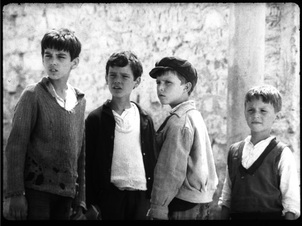Artan Puto (Çelo)
Recollections
By Artan Puto
Translated and abridged from his chapter in the memorial book Teta Xhano.
Artan Puto was born and raised in Tirana, Albania, where he still makes his home. He is a historian who trained at the University of Tirana, where he now teaches. He also holds a PhD in History from the European University Institute in Florence. He works side by side with the Albanian Ministry of Culture to save and promote Albania's precious archeological heritage, where he is Director of the Agency for Archaeological Service. In his spare time, he is researching and writing a book on the role of women in Communist era Albanian cinema.
Translated and abridged from his chapter in the memorial book Teta Xhano.
Artan Puto was born and raised in Tirana, Albania, where he still makes his home. He is a historian who trained at the University of Tirana, where he now teaches. He also holds a PhD in History from the European University Institute in Florence. He works side by side with the Albanian Ministry of Culture to save and promote Albania's precious archeological heritage, where he is Director of the Agency for Archaeological Service. In his spare time, he is researching and writing a book on the role of women in Communist era Albanian cinema.

